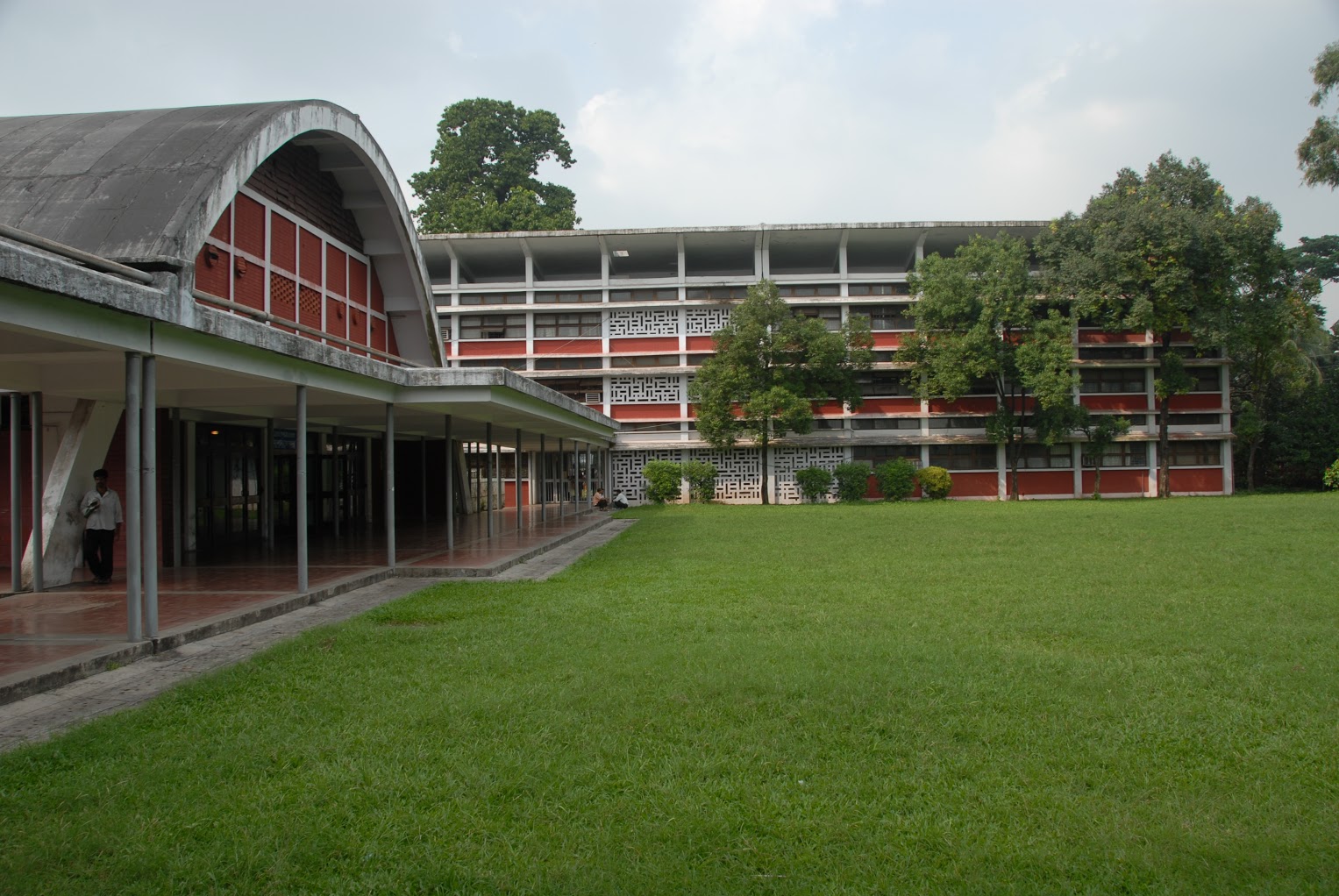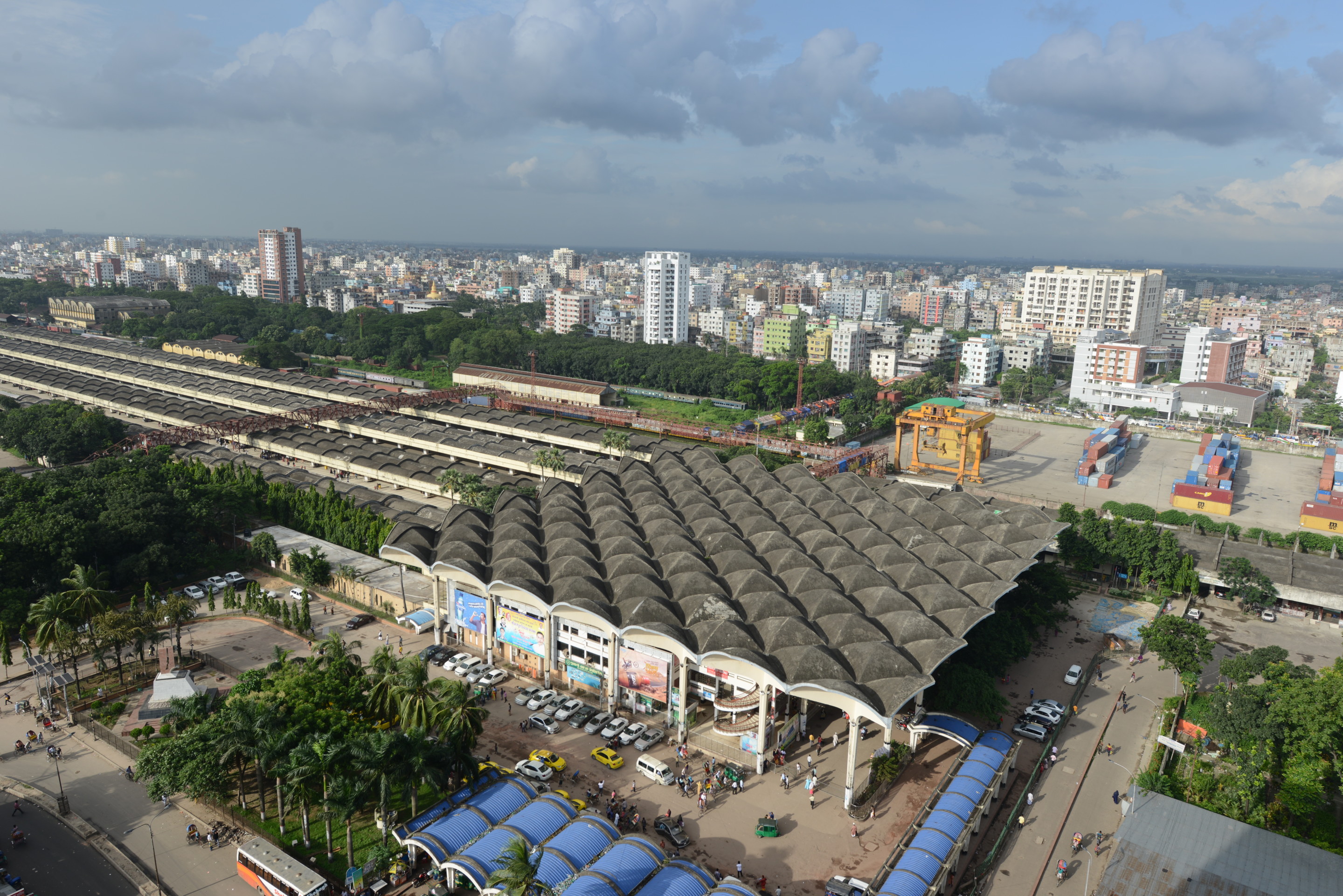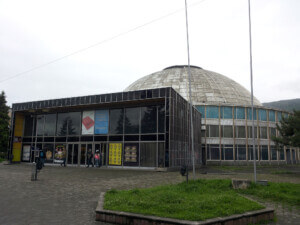South Asia is in the throes of an urban development frenzy that appears determined to reshape its major urban centers. You might call it a form of “neo-urban renewal.” Like its predecessors, this campaign of “renewal” looks at the past either with an ambivalence that is tantamount to negligence or with a hostility that sees history as an obstruction on the path to a resplendent future.
In Indian and Bangladeshi cities, this resplendent future is one filled with tall, swanky modern buildings, in whose path stands a collective body of midcentury modernist buildings. Considered out-of-date and incompatible with the prevailing smart urbanist mood, their removal is easily rationalized. This aggressive demolish-and-development urban vision dominates the thinking of political leaders and administrators, while the historical value of modernist architecture is lost on the public which alone seems capable of defending it.
Modernism was integral to the project of post-colonial “identity building” in South Asia. Today, these post-Partition buildings are stranded in a no-man’s land, not sufficiently “old” enough to merit the label of heritage and thereby deprived of protection through any legal instrument. The situation is further complicated by the lack of constitutionally autonomous heritage regulatory bodies with sufficient legal authority to protect historically significant buildings.
Old is not always gold
In India, the Heritage Conservation Committee (HCC), the powerful government organization that works under the Ministry of Urban Development, accords heritage status only to buildings older than 60 or 100 years, depending on a building’s specific history. Many modernist exemplars fall short of this threshold. Consider the case of the iconic Hall of Nations at Pragati Maidan in New Delhi. Designed by leading Indian architect Raj Rewal and constructed in 1972 to commemorate the 25th anniversary of India’s independence, this flat-topped pyramid, with its memorable concrete space-frame structure, was razed in 2017 despite massive protests by architectural communities in India and beyond. Forty-five years old, the Hall of Nations failed to meet “heritage criteria,” although there are lingering rumors that the building’s origin during the Congress era of Indira Gandhi did not help its cause under the current Bharatiya Janata Party leadership.
A similar scenario unfolded late last month, after news of plans to level 14 dormitory buildings located on Louis Kahn’s universally admired campus for the Indian Institute of Management in Ahmedabad (IIMA) came to light. This time, however, the petitioners—which included architects, professional organizations, and cultural institutions such as MoMA—were more successful. On January 1, IIMA Director Errol D’Souza withdrew the demolition plans, but the future of these buildings remains uncertain. Directly appealing to D’Souza, Kahn’s three children expressed their dismay at “such a radical course of action” when the dormitories “can be restored successfully.” Why do IIMA administrators miss seeing the value of these historical buildings that the petitioners see so clearly? What accounts for this disconnect?

The situation of post-Partition–era architecture is even more alarming in Dhaka, Bangladesh’s capital, where two iconic buildings are reportedly awaiting the wrecking ball. Both the Teacher-Student Center at the University of Dhaka (popularly known as TSC) and the Kamalapur Railway Station were erected during the so-called “Decade of Development” (1958–68). It follows that these structures, so central to the project of building the new state, should hold a special place in its national heritage, but not everyone agrees. According to administrators at the University of Dhaka, the TSC has outlived its use and is no longer able to meet the demands of contemporary education, while railway authorities allege that Kamalapur cannot be aligned with an elevated metro rail currently under construction (and which, evidently, requires a new, much larger transit hub). These alibis are typical justifications for new development, but we might wonder why the public remains unmoved by the impending demolition of these very public buildings.
Both TSC and Kamalapur speak to a formative period of a country’s history, but they cannot transmit their stories if they are demolished. A closer look at each will reveal just how much they have to tell.
An architecture of the tropics
Located at the historic heart of the University of Dhaka, TSC exemplifies a type of tropical modernism that blends local architectural traditions of space-making—particularly the indoor-outdoor continuum and generation of space around courtyards—with the abstract idiom of the International Style. The complex of buildings was designed by the Greek architect, planner, and theoretician Constantinos Apostolos Doxiadis (1913–1975) in the early 1960s. This was a turbulent time marked by conflicting currents of political tension and architectural optimism in what was then East Pakistan, now Bangladesh. On the one hand, the two wings of postcolonial Pakistan were at loggerheads because of the political domination of East Pakistan by the military junta based in West Pakistan. On the other hand, many architectural opportunities arose in East Pakistan, which benefitted from American technical assistance. The United States allied with Pakistan as part of its Cold War-era foreign policy to create a geostrategic buffer against the socialist milieu of the Soviet Union–India axis in South Asia. Under the purview of a technical assistance program, the United States Agency for International Development and the Ford Foundation provided support for building educational and civic institutions in East Pakistan. Since there was a dearth of experienced architects in East Pakistan, the government sought the services of American and European architects for a host of buildings that were constructed during the 1960s. Doxiadis was among them.
TSC is also a demonstration of Doxiadis’s idea of ekistics, by which he meant an objective, comprehensive, and integrative approach to all principles and theories of human settlements. Criticizing the top-down planning model which he viewed as a central problem associated with modernism, Doxiadis employed the notion of ekistics to promote a multidisciplinary, inclusive, and bottom-up approach. He hoped that such a method would create a synergy of local and global influences, by which one could successfully meld a data-driven theorization of planning, universal values of harmonious living, and place-based cultural inflections.
In this vein, Doxiadis aligned the TSC’s ensemble of buildings on an east-west axis, to take advantage of the prevailing breeze from the south or north. The three-story Student Union Building features a “double roof” that minimizes heat gain by allowing cool breezes to pass in between the two canopies. The ingenious solution proved to be a trendsetting feature, but it was just one of the complex’s many innovations. Doxiadis covered the auditorium with a reinforced concrete parabolic vault, a pioneering construction technique that had yet to be tested in the country. Covered walkways, supported on steel columns, weave together the major buildings and green spaces, serving as the social spine of the entire complex. In the post-Independence period, TSC became the epicenter of political agitation within Bangladesh, serving as a backdrop to political demonstrations.

Kamalapur Railway Station adopts the vocabulary of tropical modernism in an even more public-facing manner. The station’s spirited architecture breaks with colonial precedents both in the imperial center and on the subcontinent. In London, St. Pancras Station (1863–76) encapsulated modern values of mobility and exchange, while the Chhatrapati Shivaji Terminus (formerly Victoria Terminus; built in 1888 and now a UNESCO World Heritage) in Mumbai and Howrah Station (1906) in Kolkata functioned as symbols of imperial hegemony.
The histories of colonialism and train infrastructure are deeply intertwined. In 1862, the Eastern Bengal Railway Company opened the first railway line in the region from which it took its name. Connecting Kolkata with the western Bangladeshi town of Kushtia, this expansion of train services signaled a new phase in the growth of East Bengal’s colonial economy. Due to geographical- logistical issues created by the deltaic terrain, the railway did not arrive in Dhaka until the following century, after the city’s economic profile had risen and it was subsequently made, in 1947, the provincial capital of then-East Pakistan. In 1958, the government approved the creation of a new railway depot, which was inaugurated a decade later as Kamalapur Railway Station. (Pakistan’s President Ayub Khan attended the opening ceremony.) Not only was it one of the largest modern railway stations in South Asia, but it also embodied changing conceptions of modernity, from the bracing mobility of 19th-century railways to the soaring modernism that defined the 1960s.
Kamalapur Railway Station was designed by two Americans: Daniel C. Dunham and Robert G. Boughey. Both had traveled to Dhaka as employees of Louis Berger and Consulting Engineers (PAK) Ltd, a multinational architectural and engineering consortium with headquarters in America and West Pakistan. At Kamalapur, Dunham and Boughey’s challenge was to create a wide-span structure that would synthesize the language of modern architecture with the requirement of a tropical climate. Furthermore, the official demands to incorporate Islamic building iconography in the railway station’s design complicated their task. The result was the station’s unusual parasol roof, which shelters an interconnected series of low-rise structures. The profile of the terminal—a rhythmic pattern of gently pointed and arched concrete shells that recalls Danish architect Jorn Utzon’s contemporaneous Sydney Opera House (1957–1973)—evokes a typical image of tropical conditions, in which an umbrella provides protection from the monsoon rains. The light-filled and cross-ventilated train terminal, with its deeply recessed spatial volumes, is also reminiscent of Mughal pavilions. Thus, the station is modern and also rooted in its place.
The recent decision to replace Kamalapur with a multimodal transportation hub, instead of incorporating it within the proposed expansion, comes as a shock. This cultural vandalism, however, also signifies a pattern consistent with the demolish-and-development mindset.
Coalition building
“Any city however small, is in fact divided into two, one the city of the poor, the other of the rich,” wrote Plato. “These are at war with one another.” We might apply his dictum to several cities in the South Asian region, where an ongoing proxy war is being fought between mindless development and “mindful” development.
When development is treated as an index of grand political accomplishment, new construction, both of buildings and infrastructure, will vastly outweigh the comparatively low-key project of historic preservation. Restoring TSC or Kamalapur, in other words, will not provide the visual fireworks that techno-utopian, smart urbanism projects do. Only a few days ago, the Indian Supreme Court allowed one such project to forge ahead. Billed as the “Prime Minister’s dream,” Central Vista seeks to renovate and redevelop 86 acres of land along the central axis in Lutyen’s Delhi, despite widespread civil-society concern over the mutation of the site’s land-use and its diminishing public access. As often turns out to be the case in South Asia these days, the activism of the architectural community in the name of the public good is no match for the establishment thirst for the newness and grandness of development as political capital. Only international pressure at times is able to make a difference, as has happened at IIMA. This is sad.
Architectural communities in South Asia bear some responsibility for the lack of wider public awareness of historic preservation. Often the cry for preserving a historic building remains cloistered within an elitist and, at times, dogmatic advocacy powered by disciplinary jargon that is hardly understood by the public. It does not help that preservation specialists premise their campaigns on a sentimental lament for lost glory or on a museum-like approach to preservation itself. . In doing so, they remove, consciously or not, buildings from their broader economic and political contexts, as well as lived experiences. A change of course is required, by which architects, planner, and preservationists strive to build a strong coalition with a larger segment of the public. Such an alliance might do well to promote a consensus around memory and architecture’s storytelling capabilities, which necessarily implicates any given building, or group of buildings, in broader social, economic, and cultural discourses.
As I write, I hear that both TSC and Kamalapur are in their final days. Don’t cities need to narrate stories through their historic buildings? Stories endow cities with their humanity and color. Without these qualities, cities are condemned to the dystopia of uber-identical contemporaneity.
Adnan Z Morshed is a professor of architecture at the Catholic University of America in Washington, D.C. and a columnist for The Daily Star, the largest English-language daily in Bangladesh. He is also founder-director of the Center for Inclusive Architecture and Urbanism at BRAC University in Dhaka and author of Impossible Heights: Skyscrapers, Flight, and the Master Builder (University of Minnesota Press, 2015).










